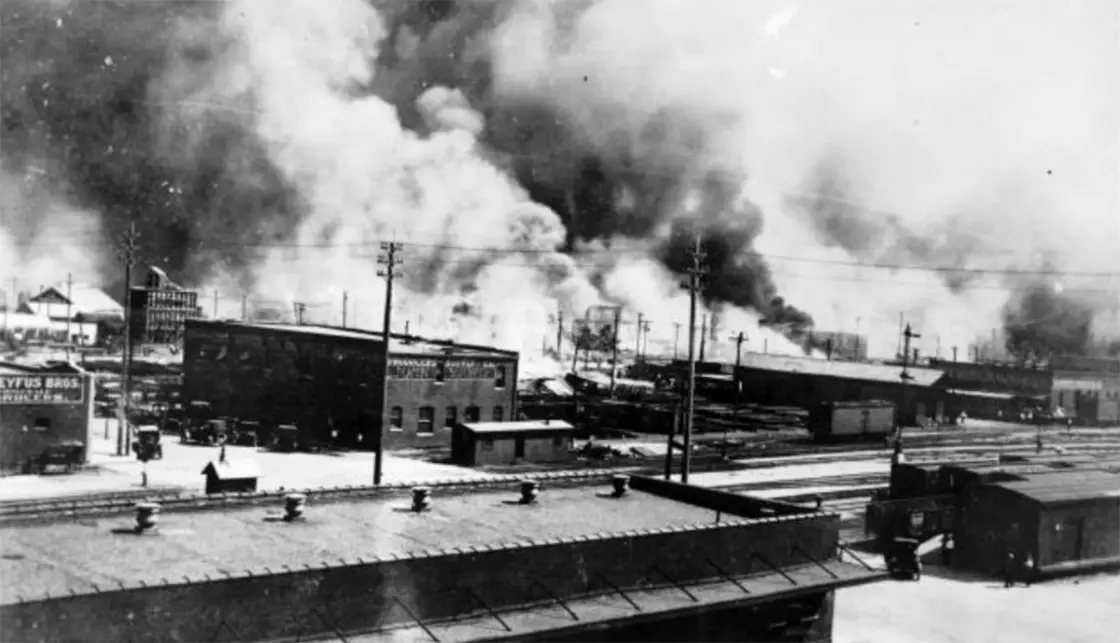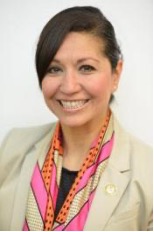Community Engagement Racial Disparities May 31, 2022
Members of the Safety and Justice Challenge learned during their annual convening in January 2022 about how Tulsa, Oklahoma has struggled to reckon with the legacy of its 1921 Race Massacre. The discussion showed how Tulsa’s history impacts its present. It also demonstrated the complexity any jurisdiction must face in navigating ongoing inequities as it seeks to lower its jail populations sustainably and fairly.
Today in 1921 mobs of White residents of Tulsa killed as many as 300 Black people. City officials had deputized some of the mobs and given them weapons. The mobs burned and destroyed 35 square blocks of homes and businesses in the Greenwood District. At the time, it was one of the wealthiest Black communities in the country, known as “Black Wall Street.” For many years after the massacre, Oklahomans rarely spoke about it. Long-term Oklahoma residents say they only recently heard about it. Meanwhile, efforts to commemorate the centenary brought tensions to the fore.
At the SJC convening, Madison Dawkins, manager of local partnerships at the Square One Project, chaired the discussion about the Race Massacre. She was joined by Oklahoma State Senator George Young; Kris Steel, Executive Director of Tulsa’s Education and Employment Ministry; Kymberly D. Cravatt, Assistant Director of Prosecution for the Chickasaw Nation; and Yvita Fox Crider, the Director of Statewide Outreach for Oklahomans for Justice Reform.
Square One’s Reimagining Justice Locally initiative is working with these Oklahoma-based leaders and others on a two-year project to consider important contextual issues around the Race Massacre. While last year marked the centennial of the Tulsa Race Massacre, historic injustices persist in Tulsa. They include ongoing racial disparities, economic inequities, and the social and cultural consequences of Oklahoma’s overreliance on punishment.
Kris began by saying Oklahoma’s historic policies and practices are rooted in racism, economic disparity, and violence. “Unfortunately, we have a pretty tough time recognizing and certainly reckoning with the historical past,” he said. The centennial weekend of the Massacre brought “tension and awareness,” Kris said, but after it was over, “it felt like we went back to things as normal.” Kris pointed to subsequent actions by the Oklahoma legislature to forbid teaching about racial disparities in schools. “Our response has not been good,” he said. “We have struggled ultimately to recognize and deal with our troubled past as a state.”
Tulsa County is an SJC site. Kris said the goals of the SJC in Oklahoma are three-fold: to advance social change through reckoning with the county’s historical injustices; to support and empower local communities to reimagine a vision of justice grounded in racial and social equity; and to invite and build a coalition among diverse stakeholder groups to build power and increase equity. Those groups will engage in discussions around “our current reality,” Kris said, focusing on historic disparities, how the state responds to violence, and what opportunities exist to build a more just state.
Yvita echoed Kris’s sentiments about ongoing disparities in Tulsa. “We are harming our communities of color. We’re seeing generational cycles of poverty and trauma,” she said. “One of the things we’re seeing is that the problem is so big, and there’s such a lack of understanding about it that people don’t necessarily know where to start.” That’s why the Reimagining Justice Locally project is so important, she said. “It helps us to engage in this conversation and guide us through civil discourse.” She said the project invited Oklahomans to understand one another’s experiences and see historic inequities. It is ultimately an opportunity to build a better state, she said.
Oklahoma State Senator George Young was brought up in Memphis, Tennessee, but has since spent 40 years in Oklahoma. During that time, he has not heard much discussion of the Massacre, he said. “The problem is that we in Oklahoma have not opened it up,” he said. He said local efforts to acknowledge the 100th anniversary of the massacre were a start in addressing years of denial that took place after the event, but that they still did not go far enough. “We have not done enough to reveal, to make this manifestation of what occurred and how it’s significant and important,” he said.
Senator Young pointed out that Black people account for 35 percent of Oklahoma’s incarcerated population compared to eight percent of the state’s population. As a pastor, he also raised the fact that overt religiosity is often a part of legislative discourse in the state. He said it is concerning that these inequities persist despite frequent references to Christian faith. Others echoed this concern.
Kymberly D. Cravatt said that as a lifelong Oklahoman, she did not know about the Race Massacre until she was an adult. Everyone involved in the discussion agreed that while complex, the effort to continue this work in Tulsa is worthwhile. They also agreed that it cannot go forward without properly acknowledging the historic racial violence.


